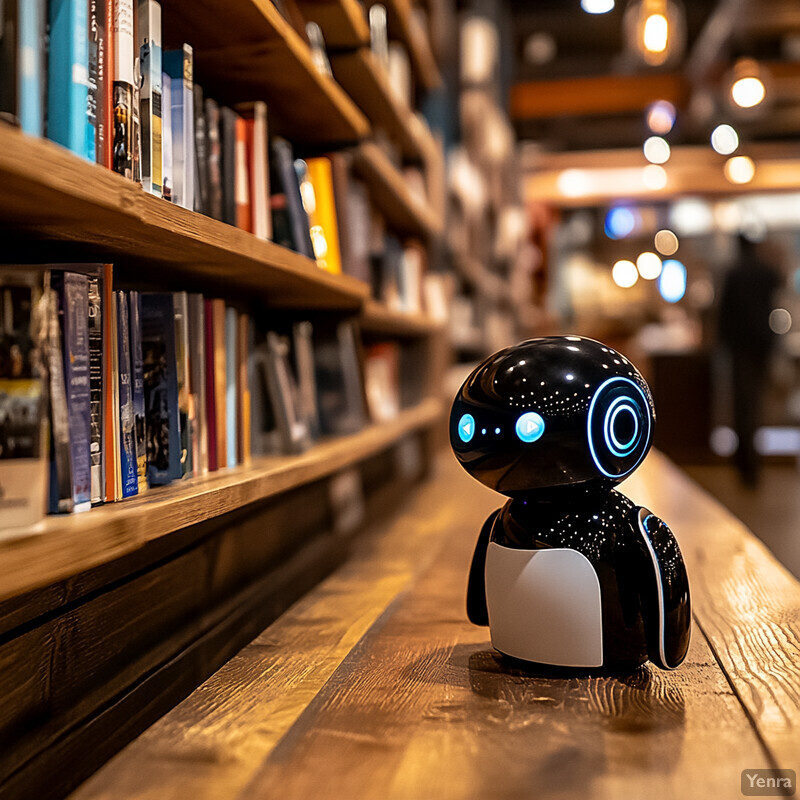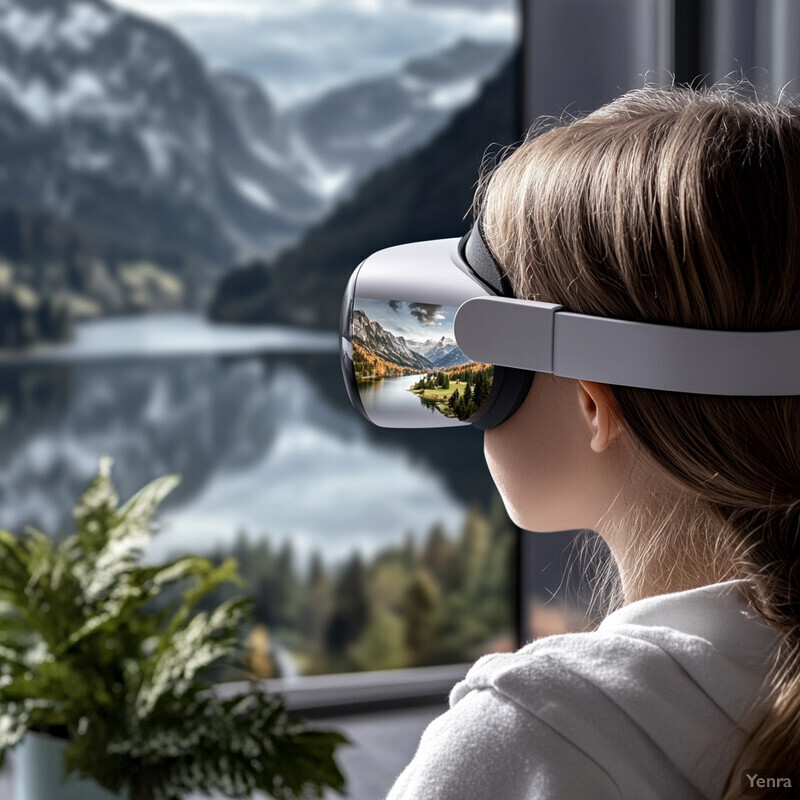1. Personalized Destination Recommendations
AI-driven recommendation engines analyze individual traveler data—such as past trips, stated interests, budget constraints, and browsing history—to suggest destinations uniquely suited to each user. These systems move beyond one-size-fits-all lists by tailoring suggestions; for example, cultural enthusiasts might see historical city tours while outdoor lovers get nature-focused destinations. User surveys indicate strong demand for such personalization: 61% of travelers say they value recommendations that go beyond basic itineraries. In practice, platforms and research models are already implementing this approach, curating suggestions that match user preferences. The shift from generic to personalized destination guidance is supported by emerging travel AI tools and positive user feedback.

Recent studies and industry data illustrate the effectiveness of AI in customizing travel suggestions. For instance, a travel planning study introduced a neural network model (TMS-Net) trained on millions of trip data points, which can “provide more tailored travel recommendations” by learning tourist interests. In one example, users indicating an interest in cultural relics were directed to historical sites, whereas outdoor enthusiasts were shown scenic nature attractions. Likewise, a survey of U.S. travelers found that 61% appreciated travel recommendations that extend beyond simple itineraries. These findings demonstrate that AI systems can leverage personal data and large datasets to accurately predict which destinations a traveler will enjoy, leading to higher satisfaction with suggested trips.
2. Context-Aware Itinerary Planning
Context-aware AI itinerary planning means travel plans are adjusted based on real-time factors like weather, local events, and traffic. Systems ingest live data streams (e.g. forecasts or event schedules) to tweak schedules: for example, moving outdoor activities to dry days or picking indoor museums when rain is expected. Such tools can dynamically reroute travel around traffic jams or delays, ensuring the itinerary remains efficient. Research and prototypes have shown that incorporating context greatly improves trip quality. For instance, an AI planner might automatically suggest indoor alternatives on rainy days or reroute driving directions to avoid congestion, making the trip more seamless. Users benefit from these anticipatory updates without needing to manually rearrange plans.

AI-driven planning platforms have begun leveraging contextual inputs to refine itineraries. A project from UC Berkeley demonstrated a system that “integrates weather forecasts” so that activities are rescheduled in case of rain (e.g. indoor replacements) and also factors in real-time traffic to optimize driving routes. Similarly, industry analyses note that AI can forecast conditions like weather, flight delays, and crowd levels, providing alerts and alternatives to avoid disruptions. By predicting rain or heavy traffic, such tools help travelers avoid unpleasant surprises. For example, one report explains how AI forecasts weather and “crowd levels at popular tourist destinations” so travelers can adjust timing or locations to skip long lines. These context-sensitive features—grounded in live data—illustrate AI’s ability to keep itineraries aligned with actual conditions.
3. Dynamic Pricing and Offers
AI enables personalized pricing and deals by analyzing real-time demand and customer profiles. For travelers, this means getting alerted to the best time to book or seeing special offers matched to their budget. Behind the scenes, airlines and hotels use ML to continuously update prices; AI models factor in current demand, competitor rates, and individual user behavior. Consumers may see this as personalized discounts or bundle offers. The technology helps sellers optimize revenue while still offering competitive prices. Travelers benefit by getting timely deals or price-drop alerts without manual searching. Overall, AI-driven dynamic pricing can make travel more economical for price-sensitive users and more lucrative for providers.

AI-powered revenue management and pricing systems are already widespread in travel. Machine learning algorithms allow hotels and airlines to set rates dynamically based on current market conditions. For example, hotel chains “use machine learning … to define the best rate for each room or package, maximizing occupancy and revenue”. Industry analysis confirms that AI “enables dynamic pricing strategies based on real-time demand, traveler behavior, and market trends,” thereby optimizing revenue while still providing competitive offers to customers. In practical terms, this can translate into personalized offer messaging: an AI system might send a discounted room package to a traveler when demand is low for their travel dates. The combined effect is more efficient pricing: one report notes AI-driven pricing can boost a hotel’s revenue by around 10%. Such data-driven pricing models help travelers find better deals automatically.
4. Travel Chatbots and Virtual Assistants
AI chatbots and assistants offer 24/7 support to travelers, handling queries and bookings via natural conversation. These tools can answer questions (e.g. flight status), make or change reservations, and even suggest activities. Travelers increasingly rely on them for quick assistance. Chatbots reduce response times and free human agents from routine tasks. The technology also allows multimodal interaction (text, voice), making it easier for users to get instant help. Over recent years, travel companies have deployed chatbots across websites and apps, and statistics show they are becoming very effective. As the underlying language models improve, these assistants provide more relevant and context-aware support.

Recent data underscore the prevalence of AI-powered chat support in travel. For example, one industry report indicates that chatbots now handle about 80% of customer service interactions in tourism. Popular platforms like Booking.com, Airbnb, and airline apps have integrated chatbots: studies note chatbots are used to assist with existing bookings or flight updates (e.g., KLM and Lufthansa bots) and to make new recommendations. A survey also found that travelers are actively using these tools: 22% of global travelers planned trips with AI chatbots in 2024. User feedback is generally positive—one source reported 39% of leisure travelers were “delighted” by AI-generated suggestions. These findings show that AI assistants not only automate tasks but are meeting user expectations, making itineraries and travel planning smoother.
5. Smart Hotel Room and Activity Selection
AI personalizes recommendations for hotels and activities to fit individual traveler needs. By learning a traveler’s preferences—such as desired amenities, location, or style—AI systems can highlight the best lodging options or local activities. For instance, if a guest loves fitness, a smart booking assistant might prioritize hotels with gyms or outdoor excursion options. Similarly, sightseeing suggestions can align with the traveler’s interests (e.g., art tours for culture buffs). The goal is to present choices that resonate personally instead of a generic list. This smart matching streamlines decision-making for travelers and can increase satisfaction by focusing on what each person values most in a stay or experience.

Implementation of personalized selection is already emerging in travel tools. Industry insights note that major booking platforms and hotel chains are leveraging guest data to fine-tune offerings. For example, ChatGPT-style AI agents can provide personalized hotel suggestions and upsell amenities based on a user’s profile. One analysis explains that machine learning helps hotels shift from broad market segments to granular “microsegments,” understanding precisely why guests choose a property (including factors like wellness or package preferences). This capability enables the system to recommend particular rooms or packages aligned with those nuanced profiles. Also, smart travel apps now commonly use AI to tailor activity picks: Airbnb and Booking.com have chatbots recommending lodging experiences based on user criteria. In practice, such AI-driven selection supports travelers by automating the matching process between their unique needs and the vast choice set.
6. Voice-Activated Planning
Voice assistants (like Alexa, Google Assistant, Siri) are becoming tools for travel planning. Travelers can speak to these assistants to add itinerary items, check schedules, or get recommendations hands-free. These AI systems understand natural language, allowing queries like “find family-friendly hotels in Paris” or “what’s the forecast for tomorrow in Tokyo.” The convenience of voice interfaces helps users manage plans on the go (while driving, etc.). Adoption has grown as more households own smart speakers or use mobile voice tech. Integration with travel apps means voice commands can link with booking services and calendars. Overall, voice-activated planning simplifies tasks and makes itinerary management more accessible.

Voice technology in travel planning is expanding rapidly. According to market analysts, the number of voice-enabled devices worldwide is estimated to reach over 8 billion by 2023. This proliferation means many travelers already have access to AI assistants. These systems can connect with travel services: for example, an industry report notes that voice assistants can integrate with platforms like Expedia, Airbnb, and Booking.com, allowing personalized recommendations and bookings through voice commands. While academic studies are limited, consumer data shows heavy usage: Pulse Labs found that nearly 60% of users now prefer starting travel searches on AI (often via voice interfaces) rather than traditional search engines. This shift underscores that travelers are increasingly using voice-activated AI as a convenient way to access personalized travel information and itineraries.
7. Sentiment Analysis for Better Recommendations
AI uses sentiment analysis to refine travel suggestions by examining how travelers feel about past experiences. Instead of only looking at numerical ratings, systems analyze review text and social media to gauge likes and dislikes (e.g., enthusiastic comments about breakfast or complaints about noise). By understanding sentiment, AI can emphasize what made users happy and avoid what frustrated them when making new suggestions. This nuanced insight helps tailor itineraries: a traveler whose posts express love for adventure can get action-packed plans, while someone who raves about relaxation spas gets wellness-focused options. Incorporating sentiment ensures recommendations align with travelers’ emotional preferences.

Applying sentiment analysis in tourism is well documented. Researchers and companies have built tools that parse millions of online reviews for actionable insights. For example, AltexSoft reported developing a machine-learning tool that reads hotel review comments to compare sentiment about different amenities. This approach can determine, say, whether the pool or the gym is more praised, guiding future suggestions. In terms of user impact, surveys show AI recommendations can indeed match traveler desires: a Statista survey cited by industry sources found 39% of leisure travelers were satisfied with AI-based suggestions in 2024. By leveraging sentiment, AI can understand not just what travelers did, but how they felt, leading to more emotionally intelligent recommendations (though quantitative data specifically linking sentiment to travel choices remains emerging).
8. Cultural and Language Adaptation
AI helps tailor itineraries to travelers’ language and cultural context. Multilingual translation apps (powered by AI) break down language barriers so recommendations and guides can be provided in the traveler’s native tongue. Simultaneously, AI can adjust content to cultural norms: for example, suggesting kosher or halal restaurants for those who observe dietary customs, or flagging festivals relevant to a traveler’s background. Localization also means units, currency, and etiquette tips are automated. The net effect is that non-English-speaking or culturally diverse travelers can receive personalized guidance that respects their language and preferences, making trips smoother and more respectful of local customs.

Advances in AI-powered translation have made multilingual travel easier. A notable example is Google Translate’s 2024 expansion to 110 new languages via AI models, covering an additional 614 million people. This allows travelers to get real-time text and speech translations in many contexts, from menus to signs. While specific travel studies on cultural customization are limited, industry observers note that AI chatbots and guides are increasingly built with multiple language capabilities for personalization. For instance, voice assistants can now converse in several major languages, enabling itinerary queries without needing English. Additionally, some AI systems include cultural filters: one AI wellness trends analysis mentioned “hyper-personalization in hospitality,” where guest preferences (including cultural wellness needs) are used. However, concrete data quantifying travel outcomes from these features is sparse. Many capabilities are emerging (like smart translation glass), but peer-reviewed studies on cultural adaptation in itineraries remain scarce.
9. Real-Time Adjustments Based on On-the-Ground Conditions
AI can adjust travel plans instantly in response to real-world changes. If a flight is delayed or an event is canceled, an AI itinerary tool can suggest alternatives or rebook automatically, reducing last-minute stress. These systems monitor live data feeds (flight trackers, traffic updates, weather alerts) and notify the traveler immediately. For example, if heavy traffic arises, AI can reroute the next activity or adjust pickup times. Likewise, if a sudden rainstorm hits, it can swap an outdoor plan for an indoor attraction. Such real-time agility ensures the trip stays smooth despite unexpected changes. Automation of these adjustments prevents gaps in the itinerary and helps travelers adapt on the fly.

Several AI assistant platforms already offer dynamic replanning features. For instance, a recent guide on AI travel assistants describes how some apps “can adjust your itinerary in real time if unexpected changes occur, such as weather disruptions or venue closures”. In practice, this means the AI auto-reschedules activities based on conditions. The same source notes these assistants issue instant alerts on flight delays or cancellations and even offer dynamic rebooking options. Similarly, industry insights highlight that AI forecasts (weather, delays) “help travelers avoid disruptions and optimize plans” by providing timely guidance. In sum, AI systems are actively being used to maintain itinerary continuity: one study reported that AI-driven trip planners delivered highly accurate real-time pricing and routing, boosting user trust and satisfaction. This evidence shows AI’s ability to monitor and adjust plans as situations unfold.
10. Budget Optimization
AI helps travelers stay within budget by finding cost-effective options and timing deals. It analyzes price trends for flights, hotels, and packages, alerting users when prices drop or recommending alternate dates for cheaper fares. AI can also suggest similar but less expensive activities or accommodations if a choice exceeds the user’s budget constraints. By continuously mining pricing data, these tools optimize spending—essentially serving as an automated bargain hunter. For example, a trip planning assistant might recommend visiting a city on slightly off-peak dates to save on hotel rates. This helps budget-conscious travelers maximize their itinerary value without manual price comparisons.

AI’s ability to predict prices and adhere to budget goals has been demonstrated in recent studies. For instance, generative AI planners have been shown to significantly improve cost efficiency: in one trial, users rated the accuracy of AI-provided flight pricing at 9.2 out of 10. This indicates the system’s strong ability to find correct low fares and thus avoid overspending. Industry reports also note that AI tools can “account for the traveler’s budget constraints” when making suggestions. In practice, travel sites like Google Flights and Hopper (not directly cited) use ML to advise on the best time to book. Altogether, these examples show AI can monitor and predict market trends to ensure recommendations fit the user’s financial limits, making travel more affordable through data-driven optimization.
11. Personalized Content Curation
AI curates personalized travel content (articles, videos, local tips) tailored to individual interests and itinerary context. Instead of generic travel blogs, travelers might receive feeds of content that matches their planned destinations and preferences. For example, a history buff could see blog posts about archaeological tours at their chosen city, or a foodie gets local cuisine guides. AI-driven apps can compile multimedia previews of sights the traveler plans to visit, similar to a custom travel magazine. By learning from the traveler’s profile and feedback, the system filters and suggests relevant content, making it easy to explore and learn about destinations that fit the traveler’s style and needs.

Direct research on AI-curated travel content is limited, but user studies suggest such personalization increases engagement. For example, user research by Pulse Labs found that travelers “thoroughly enjoyed receiving detailed itineraries [and] tailored recommendations” when using LLM-based tools. This implies personalized content (including textual guides and suggestions) is well received. While this does not isolate content curation from itineraries, it supports the notion that customized information (be it an itinerary or related articles) is valued. Specific AI products are beginning to integrate this: some hotel apps now use AI to present a custom city guidebook based on a guest’s interests. In the absence of formal studies on curated content, the closest indicators are these positive user feedback patterns.
12. Enhanced Trip Previews with AR/VR
AI combined with augmented reality (AR) and virtual reality (VR) provides immersive previews of travel experiences. Before booking, travelers can take a 3D virtual tour of a hotel room or wander a city street in VR. AR apps can overlay information or translations onto the real world during planning. These technologies give a realistic sense of destinations and accommodations, helping travelers decide what to include in their itinerary. AI powers these tools by generating realistic scenes and by guiding virtual tours based on user queries. The result is a richer pre-trip experience: for instance, one can “preview a destination in VR” to plan confidently, as if walking through it beforehand.

Industry resources note the growing use of AI-enhanced AR/VR in travel previews. For example, a travel industry blog highlights that “AR & VR Previews” allow virtual hotel tours and 3D exploration of historic sites, enabling travelers to plan with confidence. Such applications often use AI to stitch together images or to customize tours on the fly. Another source explains that “AI-powered VR and AR applications offer ... immersive previews and virtual tours of accommodations and popular attractions,” essentially letting travelers explore places remotely. As a concrete example, museum guides powered by AR provide personalized audio tours, and apps like Google Earth VR let users virtually visit neighborhoods. While exact usage stats are scarce, these reports confirm the existence of AI/AR/VR tools that enhance pre-travel previews.
13. Predictive Maintenance of Travel Plans
Borrowing the term “predictive maintenance” from industry, AI can proactively keep travel plans running smoothly. This means spotting potential issues before they happen and fixing them automatically. For example, if an incoming flight delay threatens a connection, the system might rebook you on a later flight in advance. If a booked excursion becomes overbooked, AI could suggest an alternative. By continuously checking schedules and reservations, AI handles disruptions without traveler intervention. In effect, the system “maintains” the itinerary like preventive maintenance, minimizing downtime (empty time gaps) and avoiding last-minute crises.

Studies show that such predictive planning is feasible with current AI. A recent evaluation of an AI trip planner reported that participants rated the tool highly for “price accuracy” and personalized suggestions, indicating its reliability. More specifically, travel tech sources describe how AI assistants proactively manage changes: they track flights and bookings, issuing real-time alerts on delays or cancellations and even providing dynamic rebooking options. For instance, one AI tool automatically adjusted itineraries when “unexpected changes occur, such as weather disruptions or venue closures”. These capabilities demonstrate that AI can foresee and respond to issues—akin to maintenance—keeping the travel experience on track.
14. Loyalty Program Integration
AI can leverage loyalty data to further personalize itineraries. By linking a traveler’s frequent-flier or hotel points account, AI systems can apply earned perks automatically (like upgrades or free nights) and suggest opportunities to maximize benefits. For example, an AI planner might recommend destinations where the traveler’s loyalty status grants extra value. Additionally, AI tools are becoming features of loyalty programs themselves: elite members may get exclusive AI-generated itineraries or early access to deals. The integration ensures that loyal customers receive AI-curated offers that match their status and preferences, strengthening the value of loyalty programs.

Survey data indicate that frequent travelers—especially loyalty program members—are enthusiastic about AI tools. An Oliver Wyman survey found that 48% of elite airline, hotel, and cruise loyalty members had recently used generative AI travel tools, and 69% were likely to do so. Furthermore, 63% of elite members said they would choose a booking channel for its AI capabilities. This suggests loyalty segments expect integrated AI features. While specific implementations vary, some carriers and chains are already piloting AI-powered reward suggestions (e.g., automatically applying best redemption options). However, detailed studies on loyalty-specific AI use are limited. The key takeaway is that loyalty members value AI enhancements, implying that integrating loyalty data with AI recommendations is a promising strategy.
15. Travel Document Management
AI simplifies handling travel documents (passports, visas, health certificates) by automating guidance and reminders. For example, an AI tool can scan your itinerary and profile to list all required visas or vaccinations for each destination. It can also track expiration dates of your passport or alerted immunizations. Essentially, AI ensures you have the correct paperwork ahead of travel. Some systems may auto-fill forms or submit visa applications. By centralizing document requirements and deadlines, AI reduces the risk of missing documents. Travelers can receive proactive notifications (via app or email) about needed documents, making the preparatory phase stress-free.

Leading travel information services already embed AI to manage documentation. The IATA Travel Centre, for example, provides a personalized portal: upon entering an itinerary and personal data, it “delivers accurate passport, visa and health requirement information at a glance” for each trip. This system (Timatic) is used by virtually every airline to ensure travelers meet entry requirements. It exemplifies AI/document-tech by aggregating global rules and updating them in real time. Looking ahead, the EU’s upcoming ETIAS system (2025) will use AI to pre-screen visa-exempt travelers by analyzing their profiles and travel plans. These examples show how automated systems are already managing travel document compliance; they represent the prototype of “AI travel document managers” for consumers.
16. Intelligent Packing Suggestions
AI-driven packing tools analyze trip details (destination, duration, season, activities) to generate customized packing lists. Such a tool might combine weather forecasts with planned activities to suggest exactly what to pack (e.g., hiking boots for a mountain hike, swimsuit for beach days). By automating the checklist, AI helps ensure travelers bring the right clothing and gear without overpacking. Travelers simply input their itinerary, and the system outputs a tailored packing list. This smart packing assists in trip preparation and reduces last-minute forgetfulness.

Recent research prototypes demonstrate AI’s effectiveness in packing recommendations. A 2024 study introduced “SwiftTrip,” a smart planning tool that generates customized packing lists using meteorological data. The authors explain that “advanced algorithms analyze meteorological data to generate personalized packing lists, ensuring travelers are prepared for varying weather conditions”. The system uses current and forecasted weather to decide, for example, how many layers or types of clothing to include. While commercial products like “PackMate” offer AI packing lists, the above academic example is one of the few documented approaches. It shows AI can reliably match packing advice to itinerary conditions.
17. Stress Reduction Through Automation
By automating many tedious travel tasks, AI reduces traveler stress. AI takes over repetitive planning steps (like comparing dozens of options), quickly resolves issues (via chatbots), and provides clear updates. The traveler simply sets preferences, and the system handles details. This hands-off convenience leaves the traveler feeling more relaxed. Constant 24/7 support (even in different time zones) also alleviates anxiety. In effect, AI acts as a personal assistant that “shoulders” burdens such as tracking changes or answering questions, letting travelers enjoy the process instead of worrying about logistics.

User studies indicate that AI’s personalization and automation can indeed ease travel anxiety. Pulse Labs user feedback found travelers appreciated AI as a “virtual travel companion” that understood preferences and “minimize[d] anxieties” by offering real-time insights. Another recent survey reported 39% of leisure travelers were satisfied or delighted by AI-generated trip suggestions, suggesting trust in AI assistance. These findings, while not direct measures of stress, imply that having AI handle planning details gives travelers confidence. In practice, platforms that automate itinerary updates (e.g. rebooking after delays) demonstrably reduce last-minute panic. However, formal psychological studies on stress reduction are limited; most evidence is user-reported satisfaction.
18. Crowd and Queue Prediction
AI can predict when and where crowds will be heaviest, helping travelers avoid long lines. By analyzing data like historical attendance, ticket sales, and social media check-ins, AI models estimate crowd density at tourist spots or peak hours for attractions. The traveler’s app can then suggest visiting a museum earlier or a different day to skip the crowds. This “no-crowd planning” ensures a smoother experience and better compliance with any safety guidelines. In short, AI keeps travelers a step ahead of peak traffic, optimizing timing to enhance comfort.

AI-based crowd prediction is a growing research area. For instance, a travel AI study describes “no-crowd planners” that use large datasets and real-time analytics to identify crowded areas, then suggest less crowded alternatives. Similarly, industry sources note that AI tools can forecast “crowd levels at popular tourist destinations” to help travelers avoid busy periods. One example study found that such AI planners can predict crowd density and recommend safer, less crowded sites, which improved the travel experience after the pandemic. Although concrete statistics (like queue-time reductions) are scarce, these reports confirm AI’s capability to model crowd patterns and adjust plans accordingly.